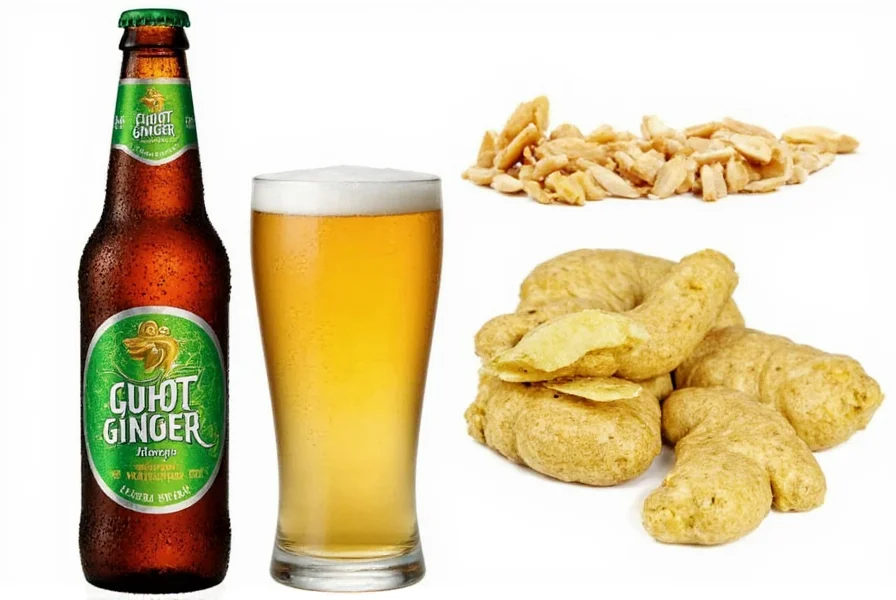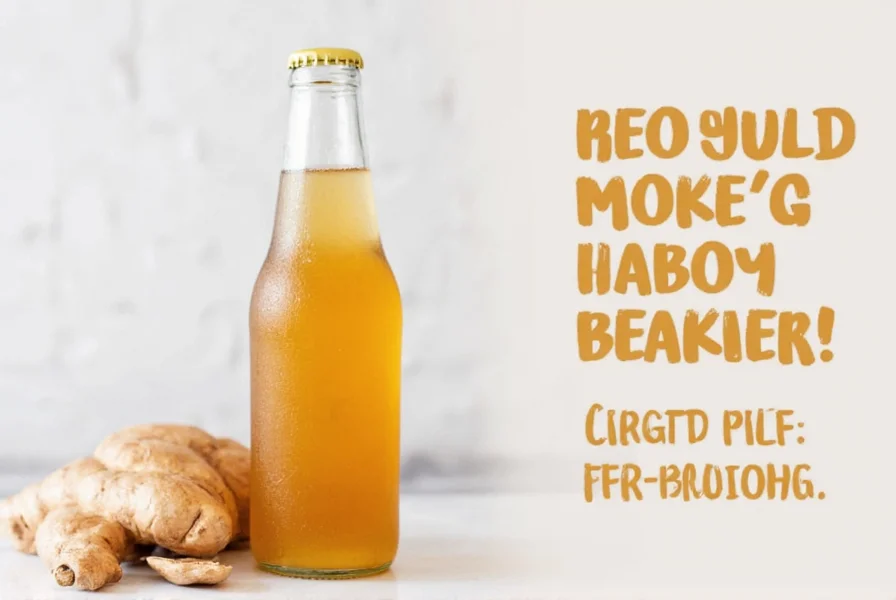Understanding the carbohydrate content in ginger ale is essential for those monitoring their sugar intake, managing diabetes, or following specific dietary plans. This comprehensive guide provides accurate nutritional information to help you make informed beverage choices.
Understanding Carbohydrates in Ginger Ale
Carbohydrates in ginger ale primarily come from added sugars, though some varieties may contain natural sugars from ginger root or other ingredients. When examining ginger ale nutrition facts for diabetics, it's crucial to distinguish between total carbohydrates and sugars listed on nutrition labels.
A typical 12-fluid-ounce (355ml) serving of regular ginger ale contains:
| Carbohydrate Type | Amount (per 12 fl oz) | Percentage of Daily Value* |
|---|---|---|
| Total Carbohydrates | 30-40g | 11-14% |
| Sugars | 28-38g | N/A |
| Added Sugars | 28-38g | 56-76% |
*Based on a 2,000-calorie diet. Daily Value percentages for sugars are not established, but the American Heart Association recommends limiting added sugars to no more than 25g per day for women and 36g for men.

Brand Comparison: Carbs in Popular Ginger Ale Options
Carbohydrate content varies slightly between brands. Here's how major ginger ale products compare:
| Brand | Carbs (per 12 fl oz) | Sugars (per 12 fl oz) | Calories |
|---|---|---|---|
| Canada Dry Regular | 38g | 37g | 140 |
| Canada Dry Diet | 0g | 0g | 0 |
| Seagram's Regular | 36g | 35g | 130 |
| Seagram's Diet | 0g | 0g | 5 |
| Fever-Tree Refreshingly Light | 15g | 14g | 60 |
| Reed's Extra Ginger Beer | 42g | 41g | 160 |
When evaluating carbohydrate content of ginger ale brands, note that "ginger beer" varieties often contain higher sugar levels than traditional ginger ale. Craft and premium options like Reed's typically have more carbohydrates due to higher ginger content and less processing.
Dietary Considerations for Carb-Conscious Consumers
For individuals monitoring carbohydrate intake, understanding how many carbs in ginger ale affects dietary planning is crucial. The American Diabetes Association classifies beverages with more than 15g of carbohydrates per serving as "medium-carb," requiring careful portion control.
Those following low-carb or ketogenic diets should be particularly mindful, as a single serving of regular ginger ale exceeds the typical 20-50g daily carb limit for these eating plans. Consider these alternatives:
- Diet ginger ale: Contains artificial sweeteners instead of sugar, with near-zero carbohydrates
- Light ginger ale: Reduced-sugar versions with approximately 50% fewer carbs
- Sparkling water with fresh ginger: Zero-carb alternative you can prepare at home
- Diluted ginger ale: Mix regular ginger ale with sparkling water to reduce carb content per serving

Reading Nutrition Labels Effectively
When determining sugar content in Canada Dry ginger ale or other brands, pay attention to serving sizes. Many bottles contain multiple servings, so what appears to be 38g of carbs might actually be for the entire bottle (18.6 fl oz), not a standard 12-ounce serving.
Look for these key elements on nutrition labels:
- Serving size: Compare to actual amount you'll consume
- Total carbohydrates: Includes all carbs, not just sugars
- Sugars: Naturally occurring and added sugars combined
- Added sugars: Listed separately on newer labels
- Percent Daily Value: Helps contextualize the amount
For those with diabetes, remember that all carbohydrates affect blood sugar, not just sugars. The total carbohydrate count is what matters most for blood glucose management.
Health Implications of Ginger Ale Consumption
While ginger itself has potential health benefits, most commercial ginger ale contains minimal actual ginger root extract. The primary health consideration with regular ginger ale is its high sugar content, which contributes to:
- Increased risk of weight gain when consumed regularly
- Elevated blood sugar levels, problematic for diabetics
- Potential contribution to dental issues with frequent consumption
Diet versions address the carbohydrate concern but introduce artificial sweeteners, which some individuals prefer to avoid. For those seeking the digestive benefits of ginger without the sugar, consider brewing fresh ginger tea or using ginger extracts in sparkling water.
Practical Tips for Managing Carb Intake
Whether you're monitoring carbs for medical reasons or personal dietary goals, these strategies can help:
- Measure servings precisely—don't drink directly from the bottle
- Choose diet or light versions when available
- Consider ginger ale as an occasional treat rather than a regular beverage
- Mix regular ginger ale with zero-calorie sparkling water to reduce carb density
- Check labels carefully, as "natural" or "craft" versions often contain more sugar











 浙公网安备
33010002000092号
浙公网安备
33010002000092号 浙B2-20120091-4
浙B2-20120091-4